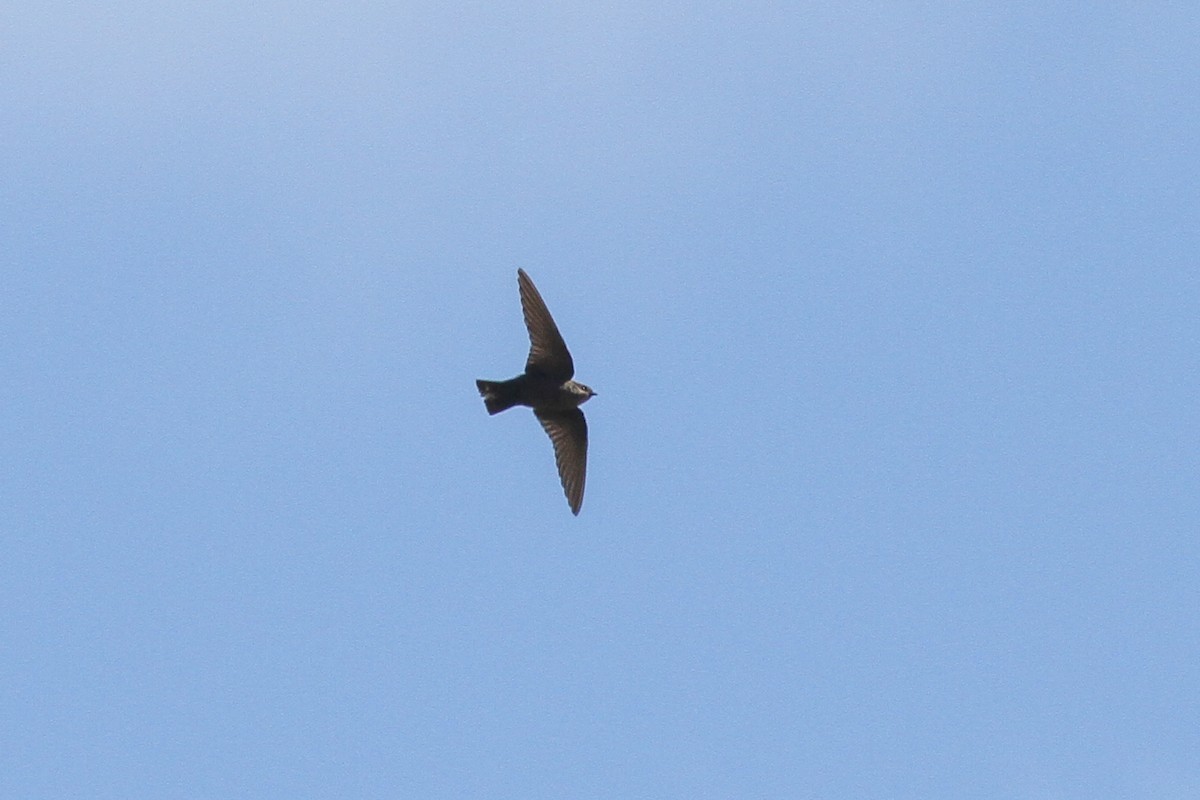Dusky Crag Martin
A species of Crag Martins Scientific name : Ptyonoprogne concolor Genus : Crag Martins
Dusky Crag Martin, A species of Crag Martins
Botanical name: Ptyonoprogne concolor
Genus: Crag Martins
Content
Description General Info
 Photo By Wich'yanan (Jay) Limparungpatthanakij
Photo By Wich'yanan (Jay) Limparungpatthanakij Description
The dusky crag martin is 13 cm (5 in) long with a broad body, wings and tail. It has sooty-brown upperparts and slightly paler underparts, with a streaked pale dull rufous chin, throat and foreneck. The tail is short and square, with small white patches near the tips of all but the central and outermost pairs of feathers. The underwing coverts are dark brown, the eyes are brown, the small bill is mainly black, and the legs are brownish-pink. The sexes are alike, but juveniles have rufous grey tips to the plumage of the upperparts and wings. This species can be distinguished from the Eurasian crag martin and rock martin by its darker underparts, and its white tail spots are significantly smaller than those of the Eurasian crag martin. The under-tail coverts are of the same shade as the underside of the abdomen but these are darker in the Eurasian crag martin. This small martin's flight is typically slow and leisurely, but it is capable of considerable speed when required. The calls are similar to those of the Eurasian crag martin and include a soft chi, chi contact call and a twittering song. 
Size
13 cm
Nest Placement
Cliff
Feeding Habits
Dusky Crag Martin predominantly consumes insects mid-flight, often foraging near cliffs or buildings. They may form flocks in non-breeding seasons and choose vertical surfaces for hunting due to air currents concentrating prey. Dusky Crag Martin is highly maneuverable, enabling efficient hunting near their nests to optimize feeding of their young.
Habitat
Dusky Crag Martin primarily resides in mountainous regions characterized by cliffs and gorges that provide suitable nesting sites. Additionally, dusky Crag Martin adapt to lower elevation areas, including urban environments where buildings mimic natural cliff faces, expanding their habitat to incorporate towns and cities.
Dite type
Insectivorous
General Info
Feeding Habits
Bird food type
Distribution Area
The nominate subspecies of the dusky crag martin breeds in much of the Indian subcontinent from the base of the Himalayas south to the Nilgiri mountains and east to West Bengal, and P. c. sintaungensis is found in southwestern China, and the northern parts of Thailand, Vietnam and Laos. The dusky crag martin is largely resident apart from local movements after breeding, but it has bred in Malaysia at least once, and occurred as a vagrant to Sri Lanka and probably Borneo. The natural breeding habitat is hilly or mountainous country with cliffs, gorges and caves, with nesting typically up to an altitude of about 1,800 m (5,900 ft), although up to 2,000 m (6,600 ft) in Thailand. This martin also breeds in lowland areas utilising man-made structures as a substitute for natural precipices. Stone buildings such as old forts are particularly favoured, and the dusky crag martin can be found in urban areas including Mumbai. Nests on buildings can be 30 m (98 ft) from the ground, and include unusual sites such as light fittings. 
Species Status
The total population of the dusky crag martin has not been quantified, but it is suspected to be increasing owing to the availability of artificial nest sites. This martin is locally common in India, Thailand, and southern China, and there appear to be range extensions to the northeast into Guangxi, southwards into lowland Laos, and westwards to the hills and plains of Sindh. There is also a recent unconfirmed report from Cambodia. Its large range and presumed high numbers mean that the dusky crag martin is not considered to be threatened, and it is classed as Least Concern on the IUCN Red List. 

 Photo By Wich'yanan (Jay) Limparungpatthanakij
Photo By Wich'yanan (Jay) Limparungpatthanakij Scientific Classification
Phylum
Chordates Class
Birds Order
Perching birds Family
Swallows Genus
Crag Martins Species
Dusky Crag Martin